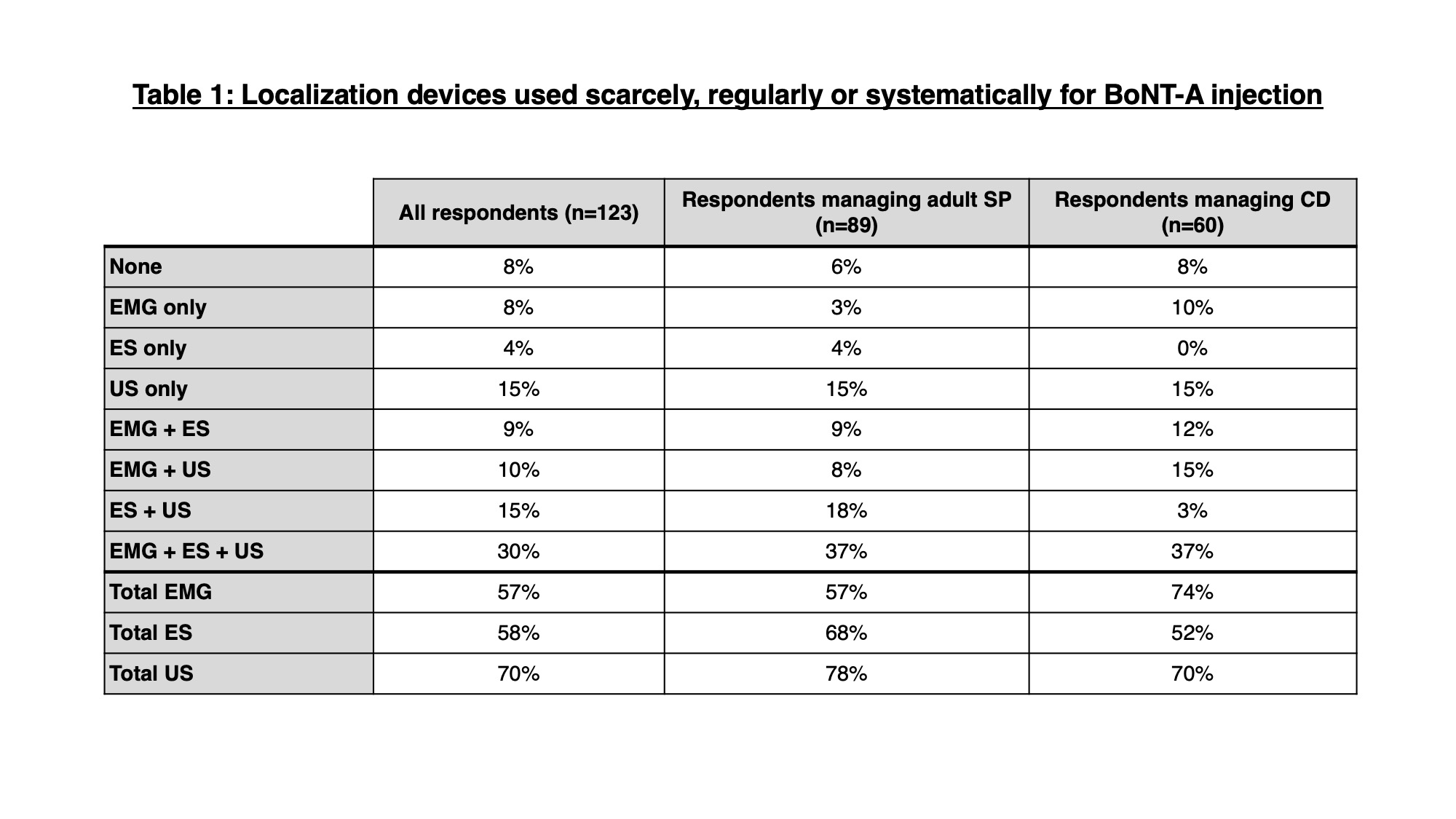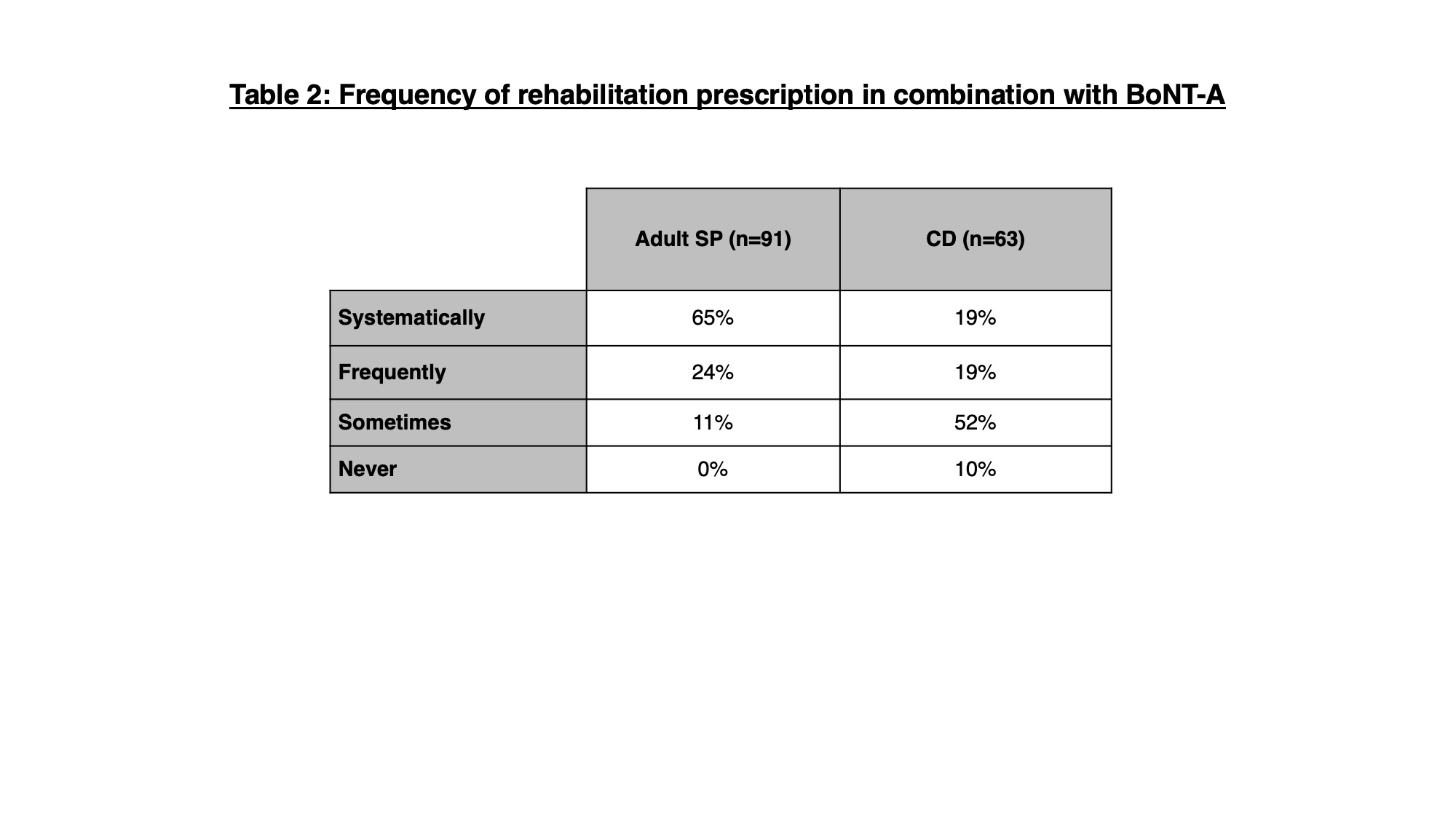Category: Other
Objective: To describe current practices among physicians using botulinum toxin-A (BoNT-A) to treat spastic paresis (SP) and cervical dystonia (CD).
Background: BoNT-A is an effective and well-established treatment for SP and CD. However, there are no specific recommendations regarding injection techniques in either disorder.
Method: INPUT (INjection Practice, Usage & Training), was a self-completed, anonymous survey on experience, training and confidence in different BoNT-A injection techniques and innovative approaches, including rehabilitation. It was designed by a multidisciplinary Steering Committee and sent by email to 553 trainees and 14 trainers from the Ixcellence Network® program.
Results: The questionnaire was completed by 131 healthcare professionals specialized in physical medicine and rehabilitation (PMR) (48%), neurology (44%), neuropediatrics (5%), orthopedics (2%) and other (1%), with an average of 15.5 years in their field and 10.9 years of BoNT-A injection experience.
Among them, 72% reported managing adult SP, with a significantly higher number of PMR specialists (86% vs 64% for neurologists, p=0.006). In SP patients, BoNT-A treatment was mainly prescribed to improve active function (79%), quality of life (66%) and passive function (58%). Localization devices were used, at least scarcely, by 94% of respondents, with ultrasound (US) being the most commonly used [Table 1]. 89% of respondents frequently or systematically combined a rehabilitation program with BoNT-A treatment [Table 2].
Among the respondents, 48% reported managing CD, with a significantly higher number of neurologists (91% vs 14% for PMR specialists, p<0.0001). The three main indications for CD treatment with BoNT-A were improving posture (76%), reducing pain (75%) and improving quality of life (75%). The injection was performed under a guidance technique at least scarcely by 92% of respondents, with electromyography (EMG) being the most commonly used [Table 1]. Only 38% of respondents frequently or systematically combined a rehabilitation program with BoNT-A treatment in CD [Table 2].
Conclusion: These results highlight the specifics of SP and CD management with BoNT-A. Adults with SP are mainly treated by PMR specialists, using US for BoNT-A injection, while CD is managed mainly by neurologists using EMG. Although rehabilitation approaches are well-established in SP management, they are less common in CD.
To cite this abstract in AMA style:
R. Bhidayasiri, L.J Jacinto, K. Bhatia, N. Dursun, T.M Chung, J. Tiley, C. Colosimo. Management of Cervical Dystonia & Spastic Paresis with Botulinum Neurotoxin-A: results from the INPUT survey [abstract]. Mov Disord. 2020; 35 (suppl 1). https://www.mdsabstracts.org/abstract/management-of-cervical-dystonia-spastic-paresis-with-botulinum-neurotoxin-a-results-from-the-input-survey/. Accessed December 12, 2025.« Back to MDS Virtual Congress 2020
MDS Abstracts - https://www.mdsabstracts.org/abstract/management-of-cervical-dystonia-spastic-paresis-with-botulinum-neurotoxin-a-results-from-the-input-survey/


